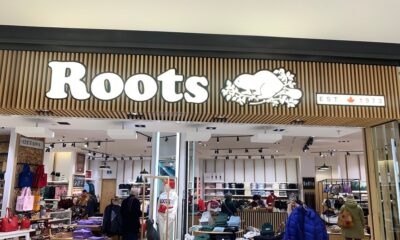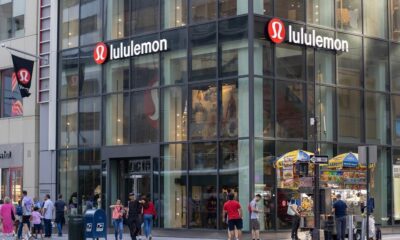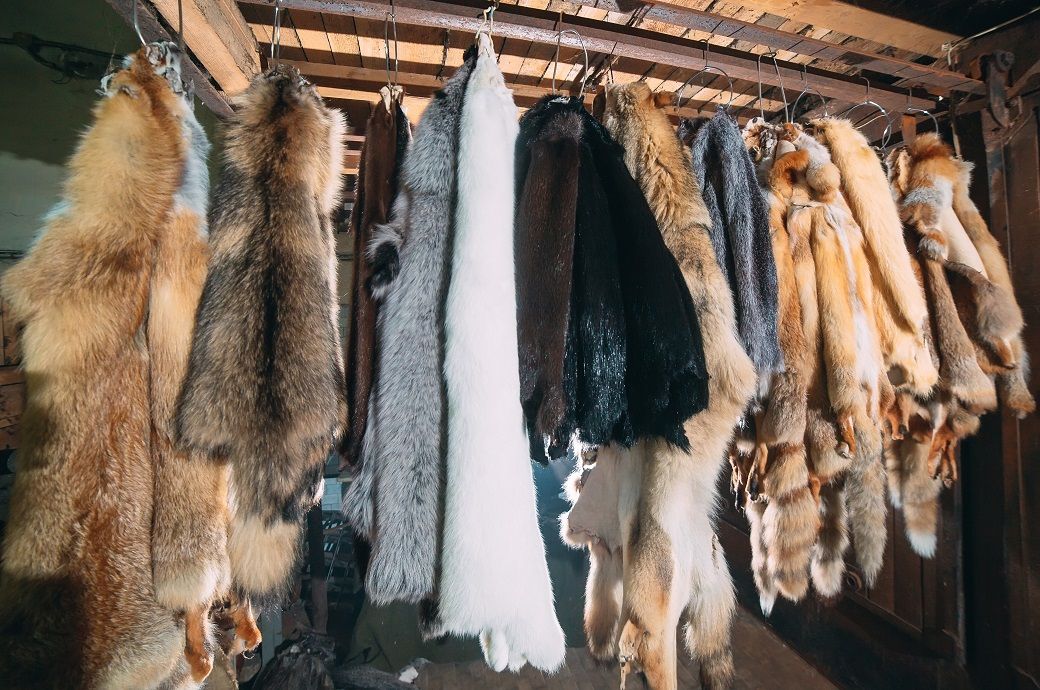Fashion
Germany’s Puma’s Q3 sales drop 10.4% as brand executes strategic reset

The gross profit margin fell by 260 basis points to 45.2 per cent, primarily due to elevated promotional activity in the wholesale channel, inventory write-downs, and increased freight costs. This was partially cushioned by a favourable mix shift towards direct-to-consumer (DTC).
Puma’s Q3 2025 sales have declined 10.4 per cent on a currency-adjusted basis to €1,955.7 million (~$2.27 billion) amid distribution clean-up, reduced wholesale exposure, and fewer e-commerce promotions.
The brand reported a net loss of €62.3 million (~$72.3 million) and a 45.2 per cent gross margin.
CEO Arthur Hoeld reaffirmed 2025 as a ‘year of reset’.
Operating expenses, excluding one-time costs, decreased 2.6 per cent to €850.6 million, reflecting early benefits from the cost-efficiency programme. However, marketing costs rose as a share of sales due to reduced revenues. Adjusted EBIT dropped sharply to €39.5 million from €237.0 million a year earlier, while reported EBIT came in at €29.4 million after accounting for €10.1 million in one-time restructuring costs. Consequently, the EBIT margin fell to 1.5 per cent. Net loss stood at €62.3 million compared with a €127.8 million net profit in the same period last year. Earnings per share came in at negative €0.42.
The company faced multiple challenges during the quarter, including muted brand momentum, elevated inventory levels across the trade, and lower-quality distribution, as part of its ongoing strategic reset aimed at strengthening long-term brand health by reducing undesirable wholesale business, curbing promotions, and improving inventory quality, Puma said in a press release.
Wholesale revenue decreased 15.4 per cent (currency-adjusted) to €1,385.7 million, reflecting reduced exposure to low-margin channels in North America, Europe, Middle East, and Africa (EMEA), and Latin America. The company also phased out undesirable business and executed significant takebacks to clear excess inventory from trade partners.
DTC sales, however, grew by 4.5 per cent (currency-adjusted) to €570 million, driven by a 5.6 per cent increase in e-commerce and a 3.9 per cent rise in owned and operated retail stores. This boosted the DTC share to 29.1 per cent from 25.1 per cent in Q3 2024, as the company shifted focus towards higher-margin, brand-controlled channels.
Sales fell across all key regions due to the ongoing reset. In the Americas, sales decreased 15.2 per cent (currency-adjusted) to €678.1 million, largely due to reduced exposure to mass merchants in North America. The US market was particularly affected given its significant share of wholesale business. The Asia/Pacific region recorded a 9 per cent decline to €367.1 million, primarily due to a drop in Greater China’s wholesale business, partially offset by growth in DTC. In the Europe, Middle East, and Africa (EMEA) region, sales declined 7.1 per cent to €910.6 million, impacted by takebacks and the deliberate scaling back of low-quality wholesale business.
All product divisions were affected by the strategic reset. Footwear sales declined by 9.9 per cent (currency-adjusted) to €1,045.8 million, with broad-based softness across most categories. Nonetheless, the Speedcat family within the Sportstyle Prime segment performed well, especially in the Asia-Pacific region. Performance categories such as Basketball and Performance Running showed resilience, driven by successful launches like the HALI 1 basketball shoe and Velocity NITRO 4 running shoe.
Apparel sales decreased by 12.8 per cent to €635.5 million, reflecting weaker performance in Sportstyle, while growth in Training—bolstered by Puma’s exclusive HYROX partnership—along with Motorsport and Basketball, provided partial offsets. Accessories declined 6.1 per cent to €274.4 million.
For the first nine months of 2025, Puma’s sales decreased 4.3 per cent (currency-adjusted) to €5,973.9 million, while reported sales dropped 8.5 per cent. Wholesale declined 8.6 per cent, while DTC rose 8.4 per cent—driven by strong e-commerce growth of 14.2 per cent and retail growth of 5.2 per cent. DTC’s share of total sales increased to 28.8 per cent from 25.5 per cent.
Gross profit margin for the nine months decreased 130 basis points to 46.1 per cent due to higher promotions and currency headwinds. Adjusted EBIT fell to €102.0 million from €513.2 million, while one-time costs and impairments led to a reported EBIT loss of -€10.7 million. The company posted a net loss of €308.9 million for the period, compared to a €257.1 million profit in 2024.
“At the end of July, we stated that 2025 would be a year of reset. Since then, we have taken important steps to clean up Puma’s distribution, improve our cash management and reset our operational expenses. By expanding our cost efficiency programme, we are moving quickly to address challenges and make the business more efficient and resilient. With third-quarter results meeting our expectations, we remain committed to executing these measures with discipline,” said Arthur Hoeld, chief executive officer (CEO) of Puma.
“I strongly believe the Puma brand has incredible potential with more than 77 years of history, one of the best product archives in the industry and huge credibility in many major sports. We have identified the areas in which we need to take decisive action and outlined our strategic priorities to become one global sports brand with globally resonating product ranges and inspiring storytelling across markets. With these strategic priorities, we have the clear ambition to establish Puma as a Top 3 sports brand globally, returning to above industry growth and generating healthy profits in the medium term,” added Hoeld.
Puma has expanded its cost-efficiency programme to include a targeted reduction of approximately 900 additional white-collar roles globally by the end of 2026. The company expects these actions, alongside its distribution reset and focus on brand consistency, to create a leaner and more agile operating structure, added the release.
Despite ongoing macroeconomic and geopolitical uncertainty, Puma confirmed its full-year 2025 outlook, expecting sales to decline by a low double-digit percentage on a currency-adjusted basis and a reported EBIT loss for the year. Capital expenditures are projected around €250 million.
Fibre2Fashion News Desk (SG)
Fashion
Nigeria’s textile imports up 47.43% YoY in Jan-Sept 2025

The country imported textile and textile materials worth N 228.83 billion in the first quarter (Q1) this year, N 337.12 billion in Q2 and N 248.32 billion in Q3.
Industry experts blame policy failure, weak execution of credit initiatives, abandonment of promised institutional reforms, pervasive corruption and structural bottlenecks like weak cotton farming, insecurity and the inability to scale locally-produced polyester for the decline, according to Nigerian media reports.
Nigeria’s textile imports rose to N 814.27 billion in January-September 2025—a 47.43-per cent YoY rise despite repeated government claims of the sector’s revival.
Rising imports indicate a weak domestic textile industry.
Industry experts blame policy failure, weak execution of credit initiatives, abandonment of promised institutional reforms, pervasive corruption and structural bottlenecks for the fall.
Hamma Kwajaffa, director general of the Nigerian Textile Manufacturers Association, lamented that the 10-per cent tax on imported textiles—which was introduced when the ban on textile imports was lifted so that the amount collected can be ploughed into domestic textile production—has not been directed to improve the private textile sector.
Kwajaffa pointed to the failure to create a dedicated textile development fund domiciled with the Bank of Industry.
Conflicting positions among top officials had stalled any action related to the sector and repeated workshops and announcements without execution had yielded no tangible outcome, Kwajaffa added.
Fibre2Fashion News Desk (DS)
Fashion
Confident Meadowhall enjoys a year of strength

Published
December 19, 2025
There’s been quite a few end-of-year updates from shopping centres and all of them are upbeat after a busy 2025.
Sheffield’s Meadowhall is one of them, noting it has been a strong year of exchanges on new leases covering 300,000 sq ft of the destination, 80% retail and 20% hospitality, including renewals from 19 tenants.
It said visitor numbers “have also remained consistently high”, headlined by its busiest Black Friday weekend in six years (262,981 visitors across the three days), while October’s school half-term was also the strongest in six years (457,000 visitors representing a 9.7% year-on-year increase).
Meanwhile, commercial brand activations continued to “perform effectively” throughout 2025, including standout initiatives from Trinny London and Jo Malone.
And, of course, new openings and expansions are the lifeblood of any centre with Meadowhall announcing fast-expanding novelty retailer Miniso has just joined its roster while fashion lifestyle brand TK Maxx has extended its presence there, “concluding a strong year of leasing activity and retail performance”.
TK Maxx has added an adjacent unit to create a 19,000 sq ft space, complete with a 173-ft fully-glazed frontage on the Upper Level The Gallery, showcasing its mix of branded fashion, beauty, homeware, and accessories.
Miniso, meanwhile, has opened a 1,759 sq ft store on Lower Level High Street, introducing its range of lifestyle, homeware, and technology products, alongside the brand’s character collections.
These additions follow several major openings in 2025, including beauty majors Sephora and Superdrug.
These introductions round off a period in which several tenants have invested significantly in upgrading and expanding their stores. More than £47 million has been spent by brands alone across 2024 and 2025, with more than a third of Meadowhall’s operators undertaking new fitouts and refurbishments in that time.
Looking ahead to 2026, operator British Land said more than 25 brands have already committed, and will be bringing a further £8 million of investment to the centre.
Louisa Holmes, Asset Director at operator British Land, said: “This year’s level of investment, from new arrivals and long-standing tenants, reflects the confidence brands have in Meadowhall as a critical part of their national portfolio. In addition to that, the centre’s success means our brands are effectively competing to bring the best and latest shop fits and concepts here, elevating the experience for our visitors.”
Copyright © 2025 FashionNetwork.com All rights reserved.
Fashion
CFDA to implement fur ban at NYFW from September 2026
-

 Business6 days ago
Business6 days agoHitting The ‘High Notes’ In Ties: Nepal Set To Lift Ban On Indian Bills Above ₹100
-

 Politics1 week ago
Politics1 week agoTrump launches gold card programme for expedited visas with a $1m price tag
-

 Sports1 week ago
Sports1 week agoPolice detain Michigan head football coach Sherrone Moore after firing, salacious details emerge: report
-

 Fashion1 week ago
Fashion1 week agoTommy Hilfiger appoints Sergio Pérez as global menswear ambassador
-

 Sports1 week ago
Sports1 week agoU.S. House passes bill to combat stadium drones
-

 Business1 week ago
Business1 week agoCoca-Cola taps COO Henrique Braun to replace James Quincey as CEO in 2026
-

 Tech1 week ago
Tech1 week agoGoogle DeepMind partners with UK government to deliver AI | Computer Weekly
-

 Fashion1 week ago
Fashion1 week agoBrunello Cucinelli lifts 2025 revenue growth forecast to up to 12%



















